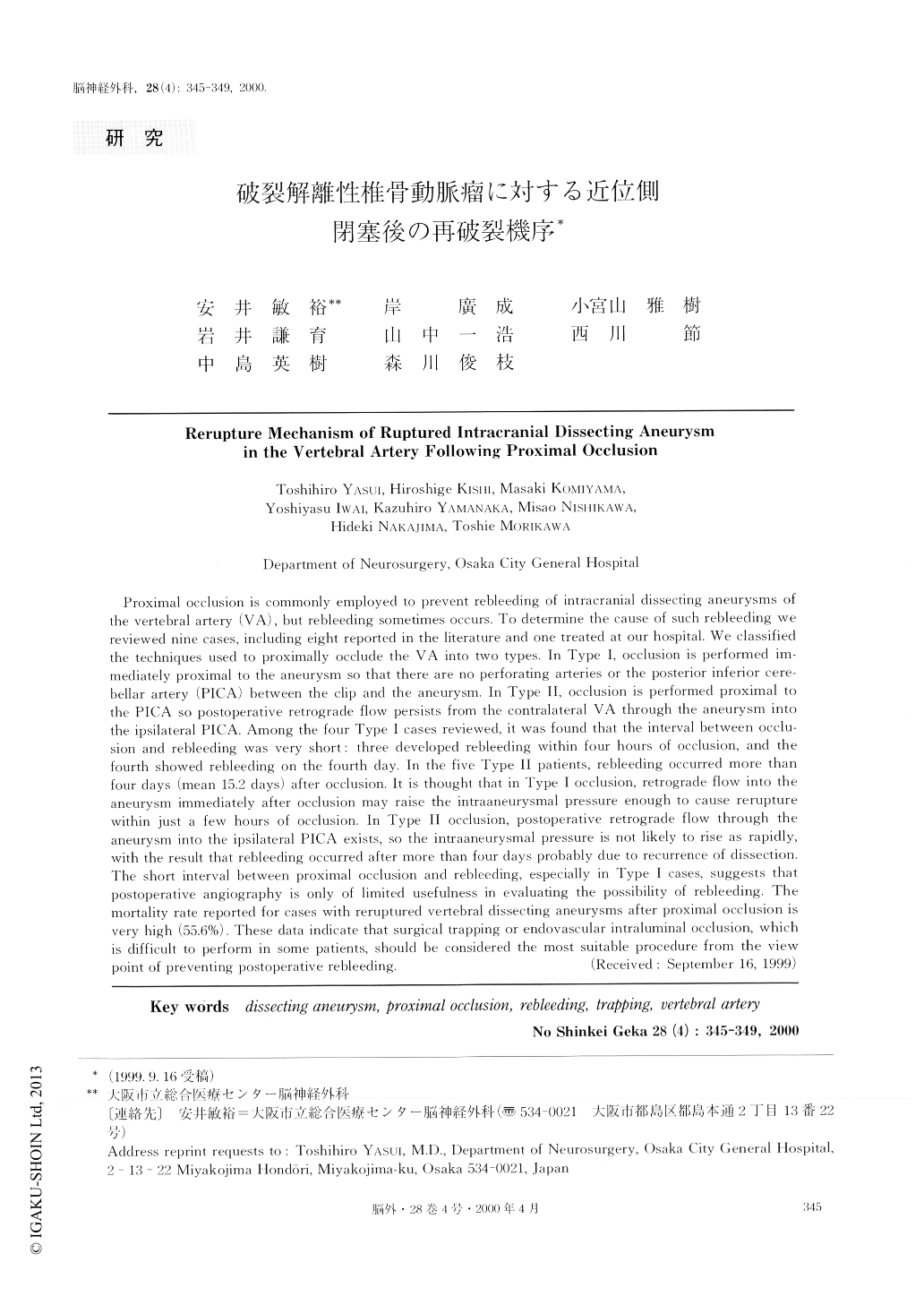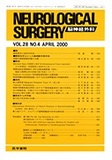Japanese
English
- 有料閲覧
- Abstract 文献概要
- 1ページ目 Look Inside
I.はじめに
くも膜下出血で発症した解離性椎骨動脈瘤(以下VA-DA)の治療として椎骨動脈の近位側閉塞が広く行われてきたが,術後に再破裂を来たすことがあり,再破裂予防の手技としては不完全な方法であると指摘されている,特に1992-1993年にかけてVA-DAが後下小脳動脈(以下PICA)より遠位にある場合にPICAより近位で閉塞すると閉塞後も対側椎骨動脈から同側PICAへの逆行性血流のためにVA-DAが還流され破裂する恐れがあると報告されてからは9,19),PICAとVA-DAの間で閉塞される傾向になった.しかし,その後の術後再破裂の報告を検討してみるとPICAとVA-DAの間で閉塞されているにもかかわらず,やはり再破裂が生じていることが分かる1,2,8).今回,破裂VA-DAの近位側閉塞後に再破裂を来たした報告例を検討し再破裂に至るメカニズムについて考察する.
Proximal occlusion is commonly employed to prevent rebleeding of intracranial dissecting aneurysms of the vertebral artery (VA), but rebleeding sometimes occurs. To determine the cause of such rebleeding we reviewed nine cases, including eight reported in the literature and one treated at our hospital. We classified the techniques used to proximally occlude the VA into two types. In Type Ⅰ, occlusion is performed im-mediately proximal to the aneurysm so that there are no perforating arteries or the posterior inferior cere-bellar artery (PICA) between the clip and the aneurysm. In Type Ⅱ, occlusion is performed proximal to the PICA so postoperative retrograde flow persists from the contralateral VA through the aneurysm into the ipsilateral PICA. Among the four Type Ⅰ cases reviewed, it was found that the interval between occlu-sion and rebleeding was very short: three developed rebleeding within four hours of occlusion, and the fourth showed rebleeding on the fourth day. In the five Type Ⅱ patients, rebleeding occurred more than four days (mean 15.2 days) after occlusion. It is thought that in Type Ⅰ occlusion, retrograde flow into the aneurysm immediately after occlusion may raise the intraaneurysmal pressure enough to cause rerupture within just a few hours of occlusion. In Type Ⅱ occlusion, postoperative retrograde flow through the aneurysm into the ipsilateral PICA exists, so the intraaneurysmal pressure is not likely to rise as rapidly, with the result that rebleeding occurred after more than four days probably due to recurrence of dissection. The short interval between proximal occlusion and rebleeding, especially in Type Ⅰ cases, suggests that postoperative angiography is only of limited usefulness in evaluating the possibility of rebleeding. The mortality rate reported for cases with reruptured vertebral dissecting aneurysms after proximal occlusion is very high (55.6%). These data indicate that surgical trapping or endovascular intraluminal occlusion, which is difficult to perform in some patients, should he considered the most suitable procedure from the view point of preventing postoperative rebleeding.

Copyright © 2000, Igaku-Shoin Ltd. All rights reserved.


